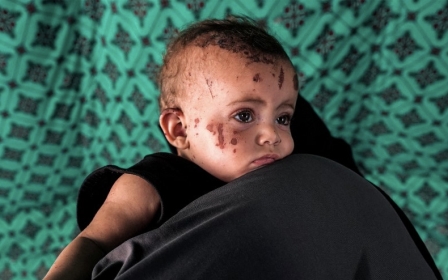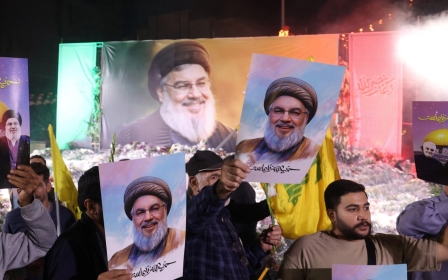How Israel is preparing for a long regional war

According to a recent report in the economic newspaper The Marker, the Israeli government has requested that the Nagel Commission, formed just a couple of months ago to advise on the country’s defence budget, provide quick conclusions to facilitate the approval of major arms deals.
This comes as retired general Yossi Kuperwasser, who previously served as head of research for Israel’s military intelligence division, has pointed to the scale of the challenges facing the country’s army.
In an article in the Israel Hayom newspaper, he noted that Tel Aviv’s strategy is based on “weakening the Iranian axis and eliminating the threat from the north to enable the residents of the north to return to their homes safely, releasing hostages, and removing the threat from Gaza to the state of Israel”.
All of this implies a long-term war that will require increasing military capabilities.
Estimates from Israel’s central bank indicate that the costs of escalating the war with Lebanon and potentially also with Iran will be significant, which is partially reflected in Israel’s increased military spending for 2024 and 2025.
New MEE newsletter: Jerusalem Dispatch
Sign up to get the latest insights and analysis on Israel-Palestine, alongside Turkey Unpacked and other MEE newsletters
While the Israeli war budget has not been published in detail (the central bank publishes figures but not the detailed budget), new forecasts from the central bank provide a hint, showing that current expenditures will increase by about 30 billion shekels ($8bn) this year, a figure that primarily includes military equipment, ammunition, and compensation for reservists for service days.
This is a modest amount when compared with the overall anticipated costs of Israel’s plans to bolster its military capabilities, as overseen by the Nagel Commission, headed by former national security adviser and retired general, Jacob Nagel.
While the details of the commission’s recommendations will remain confidential, Prime Minister Benjamin Netanyahu’s government wants the body to facilitate the urgent acquisition of advanced weapons systems.
Massive spending
The central bank’s estimates are based on the assumption that Israel’s wars across the Middle East will be prolonged and extend at least into the first quarter of 2025. Even before the escalation in Lebanon and Iran, the bank had already concluded that the country’s military spending had exceeded all expectations.
This prompted the central bank to raise its forecast for the fiscal deficit in Israel’s 2024 budget by 0.6 percent, bringing the total to 7.2 percent of gross domestic product. Israel’s updated military spending this year amounts to 130 billion shekels ($35bn), while the costs of the sustained displacement of residents from border areas has risen from three billion shekels to five billion shekels.
In addition, compensation for damaged properties since 7 October 2023 has reached 1.5 billion shekels ($404m).
Follow Middle East Eye's live coverage of the Israel-Palestine war
Reports indicate that a significant increase in state revenue from local taxes could alleviate some of the strain of military spending on the overall budget. And none of this accounts for forthcoming US financial aid.
Meanwhile, as the deficit rises, Israel’s finance ministry indicates in its multi-year plan that an additional budget has been allocated to the defence ministry, totalling 83 billion ($22bn) shekels for the years 2023 and 2024. Of this, 16 billion shekels have been used so far, primarily to procure additional US military aid.
The Nagel Commission’s interim report (the final report will be released by December) aims to establish a policy within the current budget framework to optimise the use of existing equipment and ammunition, while allowing for weapons procurement deals.
The war on Israel's northern front is just one part of its regional plan, supported by the US, to dismantle the resistance axis and undermine the 'unity of fronts' strategy
Its proposed plan for developing Israeli military capabilities, which is long-term and spans several years, is expected - at the very least - to involve an annual spending increase of 30 billion shekels ($8bn) until 2028, which could be extended. Many financial projections, however, indicate an annual spending increase of 55 billion shekels ($14.5bn) is more likely.
In short, it is evident that Israel is moving towards a profound shift in the structure of its military, based on long-term wars that align with its regional ambitions. As indicated by media reports, the focus will be on both ground and naval forces, with priority given to long-range regional combat.
The war on Israel’s northern front is just one part of its regional plan, supported by the US, to dismantle the resistance axis and undermine the “unity of fronts” strategy. Israel’s primary target is Iran, in an effort to undermine the regime in Tehran and neutralise its nuclear and missile programmes.
The war on Gaza is expected to continue for a long time, potentially turning into a permanent occupation, based on ethnic cleansing operations in the northern part of the territory. Despite the strength of the Israeli economy and its reserve assets, Tel Aviv is increasingly reliant on US support in military, financial and diplomatic matters.
Any regional war that Israel wages will thus become an American one, as Tel Aviv continues to deny the Palestinian cause in an attempt to end it definitively.
The views expressed in this article belong to the author and do not necessarily reflect the editorial policy of Middle East Eye.
Middle East Eye delivers independent and unrivalled coverage and analysis of the Middle East, North Africa and beyond. To learn more about republishing this content and the associated fees, please fill out this form. More about MEE can be found here.





